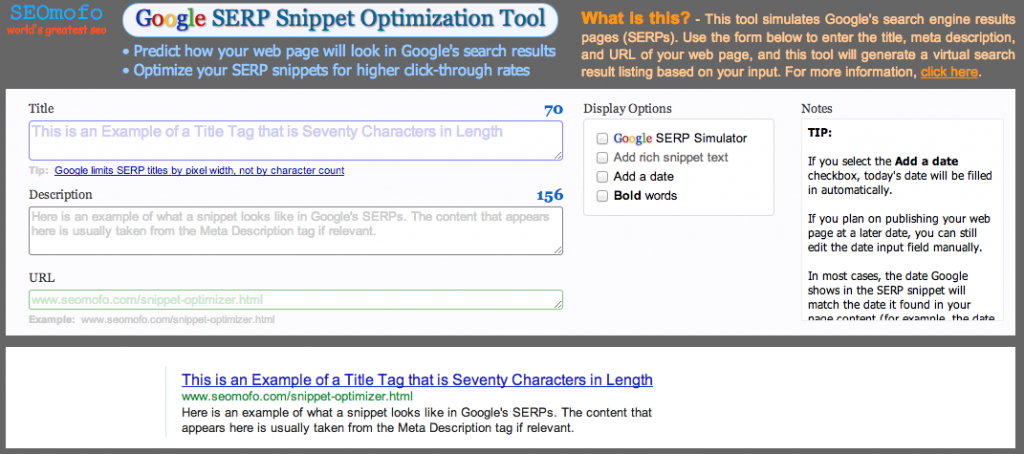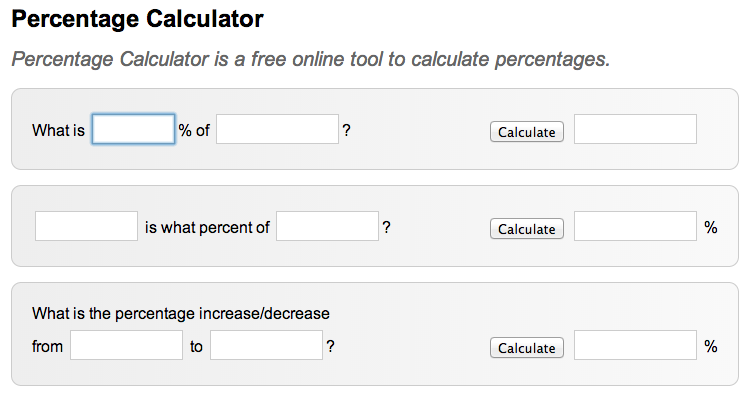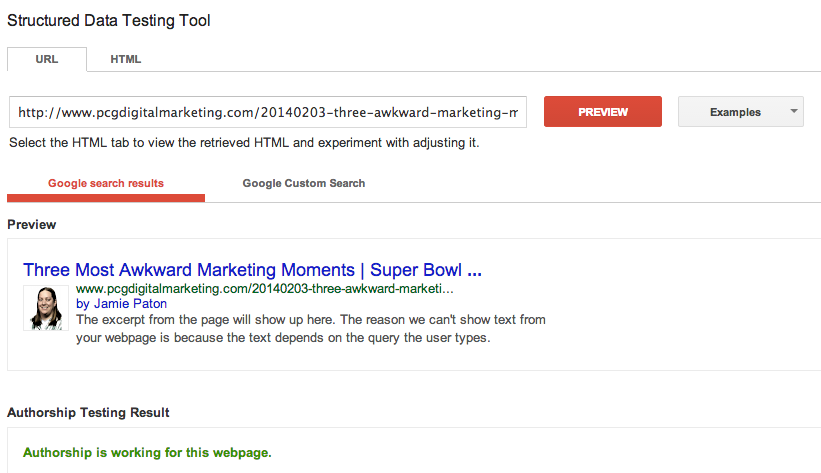If you manage SEO accounts or happen to dabble in search engine optimization, chances are you’re already familiar with the higher level tools out on the Internet. You know, the ones used to help determine a strategy and measure ROI – Google Analytics & Webmaster Tools, Majestic SEO, Moz.com’s Open Site Explorer, and the list goes on and on.
But what about the day-to-day, when you are working in the weeds and sifting through the nitty-gritty of a website and its traffic?
Here are five free online resources that can make the job a little bit easier:
1. SEOmofo’s Google SERP Snippet Optimization Tool
Meta titles and meta descriptions are like the Goldilocks of SEO; they need to be just right. Titles should be no more than 70 characters and the description should be between 150-160, but who wants to copy and paste text into a Word document just to use the word count tool? Not I.
SEOmofo’s handy SERP snippet tool not only counts characters, but also provides an example search result so you can see exactly what fits within the allotted character limit.
Looking for something even more basic? Try http://www.wordcounttool.com
2. Percentage Calculator
For non-math loving people like myself, Google Analytics is a life-saver. Besides the fact that the math is done for you, almost every comparative metric is accompanied by a color-coded arrow signifying positive or negative changes. But every now and then I stumble upon some extraneous metrics than need to be presented in a nice way.
Hence my love for PercentageCalculator.net. The tool couldn’t be any more simple with its straightforward fill-in-the-blank instructions.
3. Aspect Ratio Calculator
I primarily use this tool for resizing images, or at least for figuring out what the new dimensions should be. Since not every website platform is as simple as WordPress, a little HTML can go a long way, especially when it comes to making small tweaks to a live web page. After all, disproportionate images can be really ugly.
The Aspect Ratio Calculator makes it easy to go from this giant image:
<img src=”logo.jpg” alt=”logo” height=”1150” width=”2000”>
To this nice, compact, and non-distorted one:
<img src=”logo.jpg” alt=”logo” height=”288” width=”500”>
For some basic HTML help, try: http://www.w3schools.com/
4. Google Webmaster Tools Structured Data Testing Tool
Authorship Tags are all the rage these days, but based on your access level to a client’s various online assets the process of setting them up can range from, “That was easy, we’re good to go,” to, “They said it’s been set-up correctly, but…”
Regardless of who handled what, it’s not a bad idea to test it with Google’s very own Structured Data Testing Tool. Just enter a link to a page in which an authorship tag should appear and click ‘Preview’.
5. Google Trends
Like Google’s many other online resources, Google Trends is rich with data useful to SEO strategists. With the ability to dive down into specific time frames, categories, search terms, and even specific regions, Google Trends is much more than a place to mine for potential content topics or keywords (although it’s good for that too).
Industry trends and brand interest can also be gleaned from the various charts, graphs, and tables. These insights can then be used to help predict and/or explain organic traffic patterns.
For example, search interest in ‘rental cars’ peaks in July and bottoms out around November/December. For ‘cheap flights,’ search interest is at its highest in July and January. And strangely enough, every year the search volume for “marshmallows” is at its highest in November (I guess I severely overestimated America’s love of s’mores).
Understanding the industry in which your SEO efforts lie is obviously vital to a successful strategy, but it also doesn’t hurt to work smartly either. Make good use of your time with these helpful online tools.





